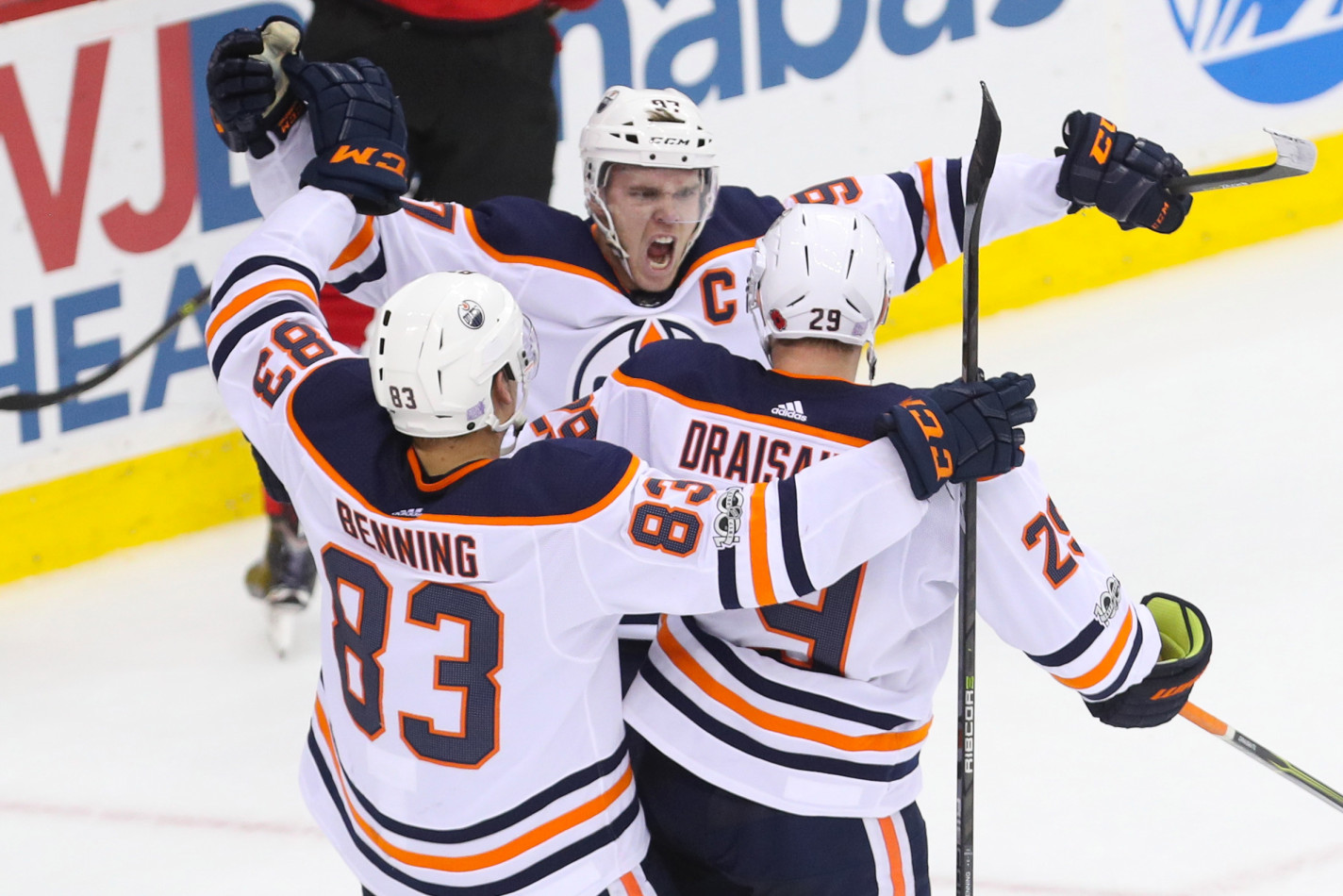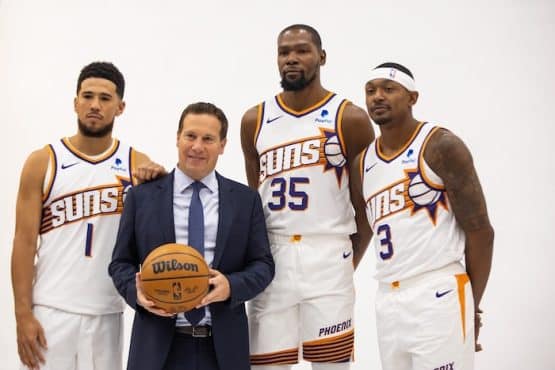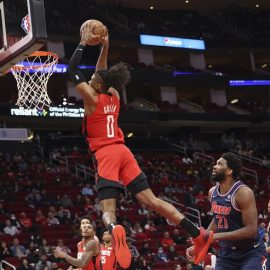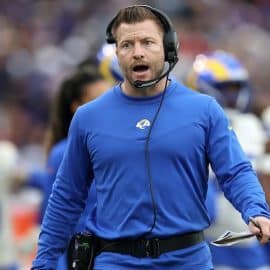It ended with a thud on Friday night. The Edmonton Oilers dropped a 3-2 decision to the Chicago Blackhawks on Friday night, losing the best-of-five series in four games. As a result, the Oilers failed to qualify for the Stanley Cup Playoffs for the 13th time in 14 years.
Friday night was a bitter pill to swallow, and it is one that is likely to stick until the puck is dropped in December (we hope). However, a step back and some reflection will allow people to see that the 2019-20 season represented improvement.
Was it perfect? Far from it. This team still has a long way to go to compete for a Stanley Cup. That said, the Oilers took steps forward this year and saw some long-term solution emerge. That’s important for the long-term future of this team.
Here are my top five takeaways from the 2019-20 Oilers season.
5. Nugent-Hopkins Is a True Core Piece: To my eye, this was the best we have seen Ryan Nugent-Hopkins. After seemingly bouncing around the Oilers lineup the last few seasons, Nugent-Hopkins settled in as an impact left winger.
He struggled during the first half of the season when dealing with injury, but he was terrific in 2020. He scored 61 points (22 g, 39 a) and was a strong two-way presence with Leon Draisaitl and Kailer Yamamoto on the best second line in hockey.
Nugent-Hopkins was strong in the playoffs as well, the third best Oiler behind McDavid and Draisaitl to my eye. He scored eight points (2 g, 6 a) in the four game series.
When talking about this team’s core, Nugent-Hopkins should be part of it. He’s a proven top-six forward who you should expect 60+ points and solid two-way play from. That has real value. He should be locked into a top-six left wing spot moving forward.
4. Goaltending Is Still An Issue: Mike Smith brought a swagger to the crease and locker room. He also provided the Oilers with some strong stretches of play, specifically in October and January. Overall, however, Smith wasn’t great in his first season with the Oilers. His .902 save percentage is well below average, and his common mistakes with the puck just aren’t worth the reward.
A pending free agent, the Oilers should simply thank the veteran for his time and walk away in October.
Mikko Koskinen was the better of the two in this tandem. His .917 save percentage this season was roughly average, and he’s proven he can give 35-40 games a season at a strong level. He’s not a workhorse, however, and needs help in the crease.
Smith wasn’t the answer this season, and shouldn’t be in 2020-21 either.
This, to me, is Ken Holland’s biggest task in the off-season. He needs to find a tandem goalie to put with Koskinen. The free agent market will have options, as will the trade market.
Robin Lehner is the homerun option, but Thomas Griess, Anton Khudobin and Aaron Dell could be affordable options that are an upgrade on Smith.
Trade wise, the Penguins are likely to move on from one of Matt Murray and Casey DeSmith. Will the Rangers move a goalie? They have three legit NHL options, all of which would be upgrades in Edmonton.
3. Ethan Bear and Caleb Jones’ Emergence: Ethan Bear has arrived, and quite frankly he is legit. Bear jumped into a top-four role with special teams duty and never really looked out of place. He’s strong defensively, can transition the puck and has good offensive instincts. He’s already, in my opinion, a top-four NHL defenseman.
Bear’s emergence filled a major hole on the Oilers roster, and that should not be overshadowed. He’s going to be a big part of this organization moving forward.
Jones didn’t breakout in the same way as Bear, but he did cement himself as an NHL player. Jones handled third-pairing minutes quite well, and honestly should be trusted to handle that on a full-time basis next season. He’s an all-around solid defenseman who can move the puck. He’s perfect for the modern game.
Both of these guys should be filling regular defensive roles next season. Both are homegrown and both should be on value contracts. That’s a big win for the organization.
2. Kailer Yamamoto’s Emergence: 26 points in 27 games. It was a strong showing for the club’s first-round pick in 2017. Kailer Yamamoto came up from AHL Bakersfield and made an impact. His chemistry with Leon Draisaitl is undeniable, and Yamamoto also fit on the second powerplay unit. He’s not a possession driver or a star, but Yamamoto appears to be a real top-six forward who will be on a value contract next season.
His ability to retrieve pucks, even at his size, is tremendous. He has real skill and has shown an ability to both score goals and make plays. Again, he’s not going to be the driver of a line, but he does appear to be a real solid complimentary winger who can handle a top-six role.
That has value, and Yamamoto’s emergence filled a hole that has been there since the second Jordan Eberle was traded to New York.
1. January – March Improvement Shows Progress: The Oilers played their best hockey in the 2020 portion of the season. Starting with a big New Year’s Eve victory over the New York Rangers.
From opening night until December 27th’s loss against the Flames, the Oilers were a below average hockey team with a great powerplay and penalty kill. Through those 41 games, the Oilers posted a 20-17-4 record with lackluster advanced numbers.
Their Corsi For was 47.52%, Fenwick For at 48.39%, shots for percentage at 47.86%, Goals For at 43.9% and xGF at 48.41%. Scoring chances wise, the Oilers were getting just 47.34% at five-on-five. It wasn’t good enough.
From December 31st until the pause began in mid-March, the Oilers numbers were better at five-on-five. It appeared, in the second half of the season, that the club made real progress. It appeared that the message and the system of Dave Tippett was working for this club.
They went 17-8-5 in 30 games played with a 48.33% Corsi For and a 48.27% Fenwick For. The shots for percentage ticked up to 48.89%, while the goals for (51.49%) and xGF (48.65%) also saw some sort of improvement. The Oilers were getting 48.2% of the scoring chances during this stretch, also an improvement.
(all stats via Natural Stat Trick)
These aren’t elite numbers, but they do represent an improvement almost across the board. That’s a good sign for a young team still developing and building. There is still room for improvement, but overall the Oilers showed progress in the second half of the season. That’s a good sign for the future.
Add The Sports Daily to your Google News Feed!







